From the start of development, both the Tiger H and the Tiger P were assigned a newly designed intercom, the "Bordsprechanlage 20". Four of the five crewmen were wired to this network that was integrated with the tank's radios. Command Tigers ("Befehlstigers") were designed later and were given a different intercom.
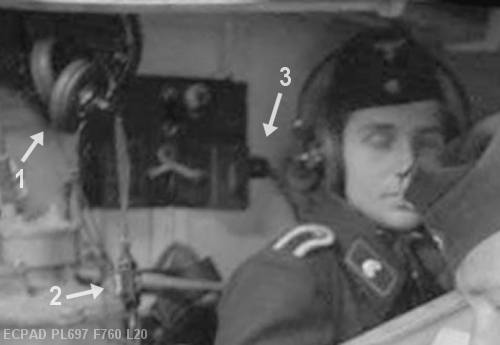
This photo from inside a "Mid" Tiger shows the commander's headphone/microphone set [1] hung on the turret roof. The microphone's switch box is at [2]. The gunner is wearing his headset and it is plugged into his "Kasten Panzer 22" [3] which is on a circuit board.
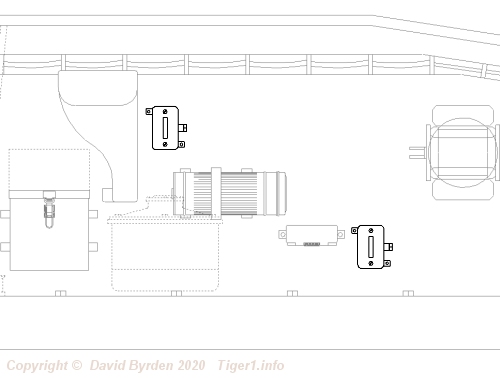
In the original design of the Tiger, boxes 21 and 22 were screwed to mounts welded on the turret inside walls. This diagram shows the relevant layout of the left inside wall of the turret. The commander's "Kasten 21" was directly above the traverse gearbox (which, at that time, did not have a handwheel). The gunner's "Kasten 22" was low down near his vision port. Both boxes had their sockets facing to the rear.
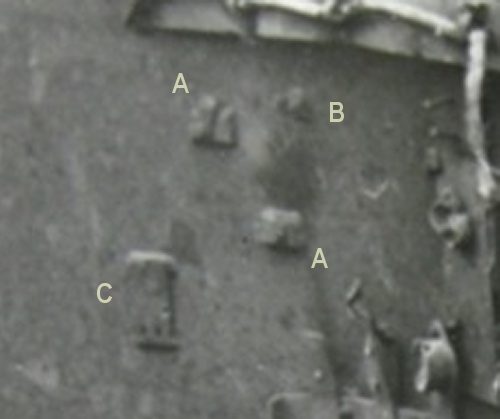
Our only evidence for that original layout is a photo of the wreckage of Tiger "732" of s.Pz.Abt.501. The commander's box was bolted to the blocks at [A]. The cable clip at [B] secured the lead from that box to the electrical harness above. The item at [C] is for the base of the flare pistol bracket. It seems that the headset leads might collide with the flare pistol (see the layout diagram) but the position of the cable clip allows no other orientation for the box than what I have drawn.
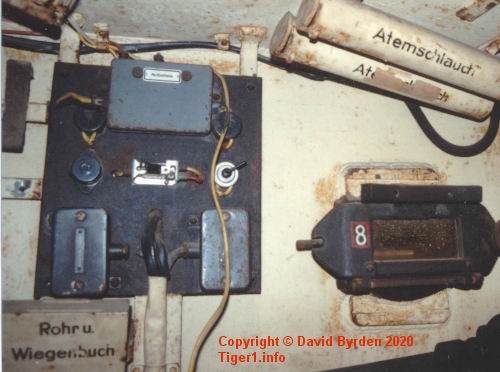
When a large circuit board was added to the Tiger's turret, both of these boxes were placed on it. They are at the bottom of the board in this photo, Box 21 to the left and 22 to the right, both facing outwards. This was the arrangement inside Tiger "712" which is currently a museum relic.
The upper portion of the circuit board was deleted later on, without affecting the boxes. Later still, in Summer 1943, a "new" turret was introduced. Again, the boxes remained exactly here.
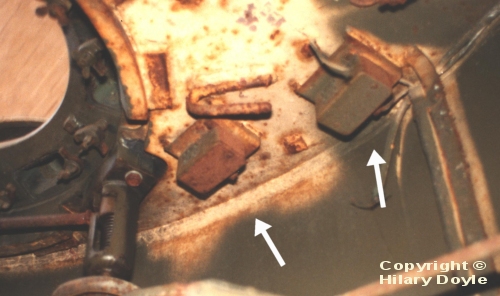
Around September-October 1943, the Tiger was simplified in many ways to cut costs. The turret circuit board was deleted. These intercom boxes were moved to new brackets on the turret roof, as we can see in this museum's "Late" Tiger. The boxes are arrowed in this photo; they are ahead and to the left of the cupola.
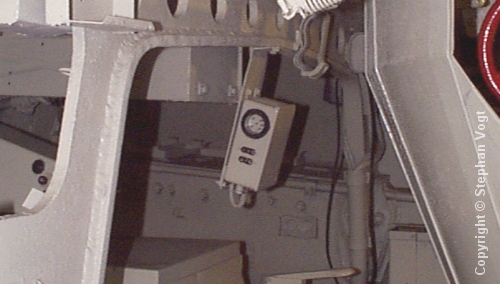
The other box in this intercom system was the "Kasten Panzer 20". In this photo we can see that it is attached to a simple sheet-metal plate bolted under the center of the structural cross-brace in the Tiger's hull. The plate is bent in this museum tank (Tiger "712"). The radio rack, in a fully equipped Tiger, would be only a short distance away from it on our left.
Although the internal storage of the Tiger changed several times during its production run, the scant evidence that we have does suggest that the "Kasten 20" stayed exactly here till the end.